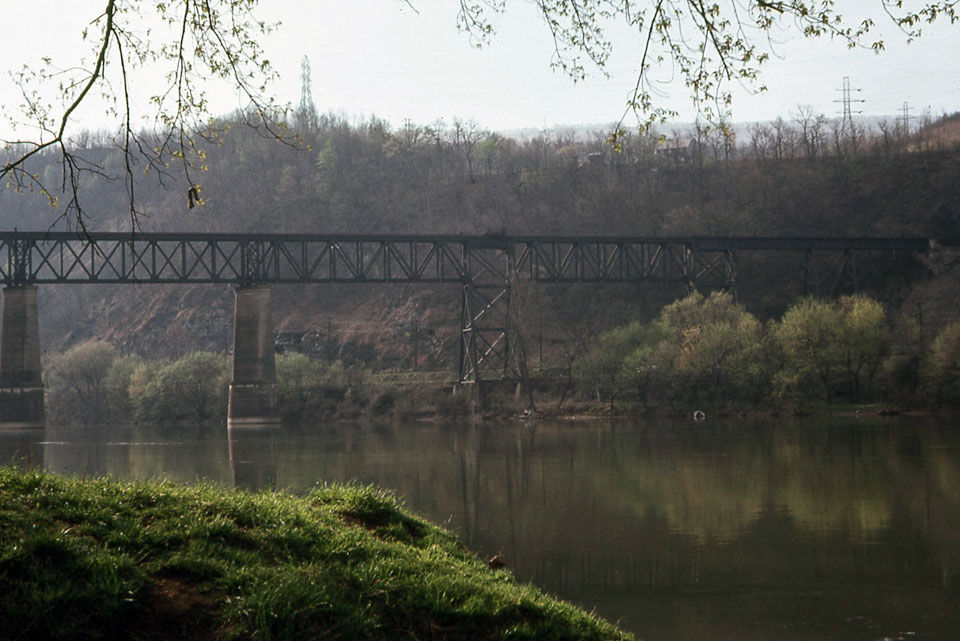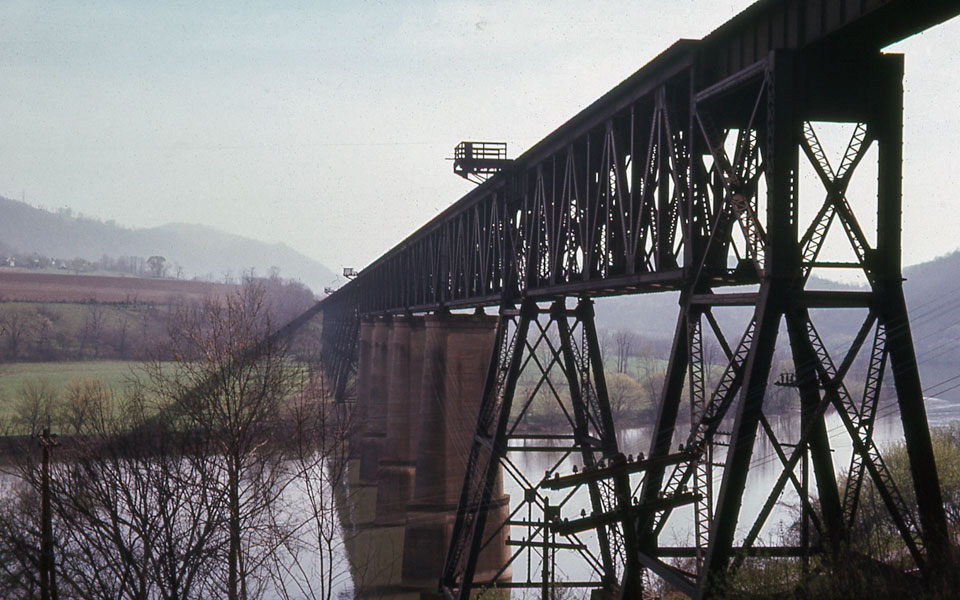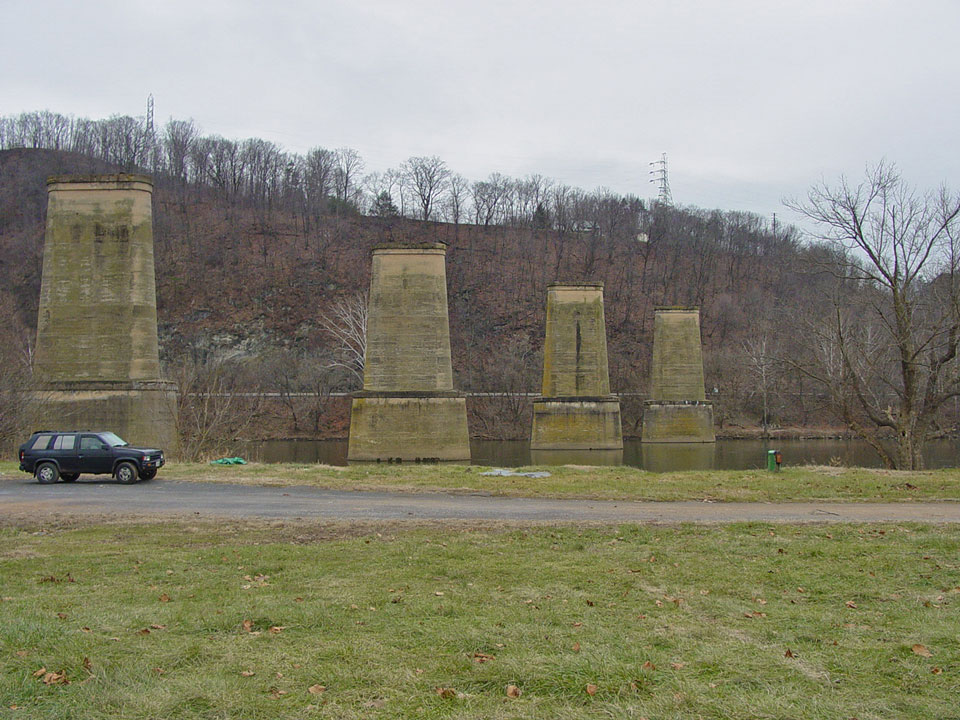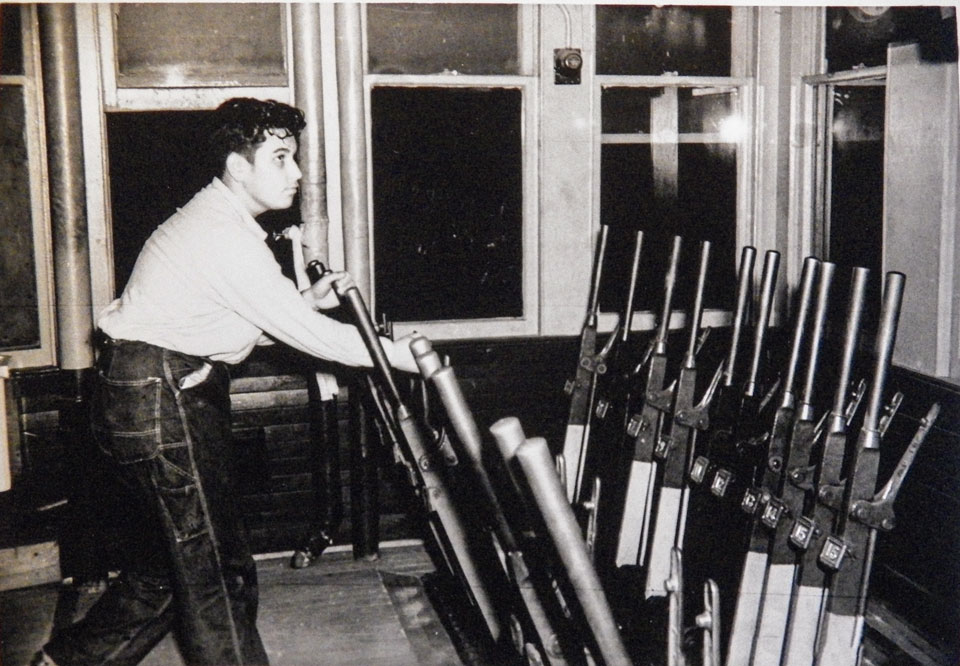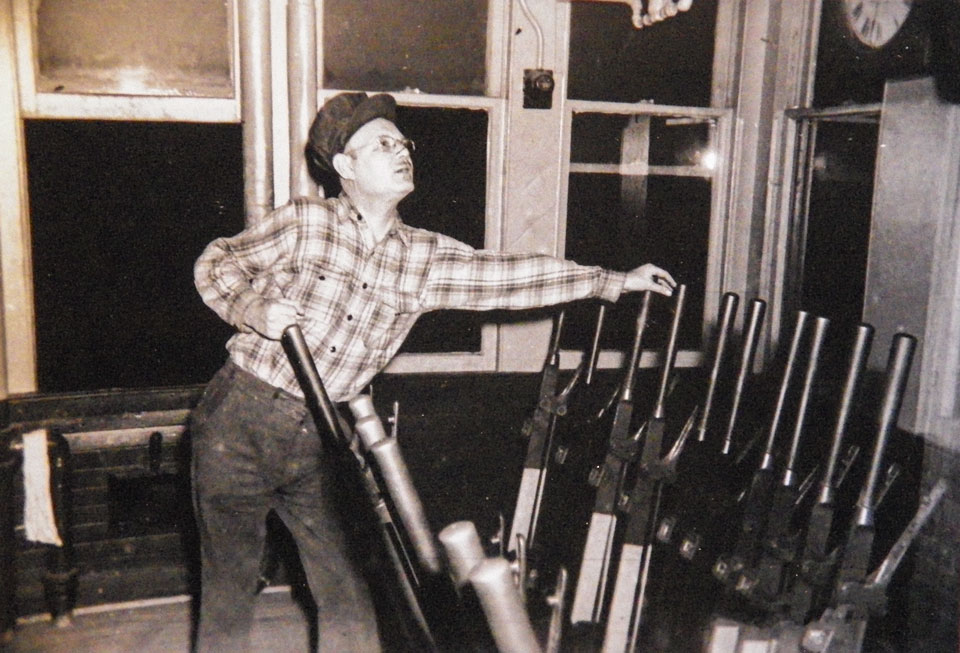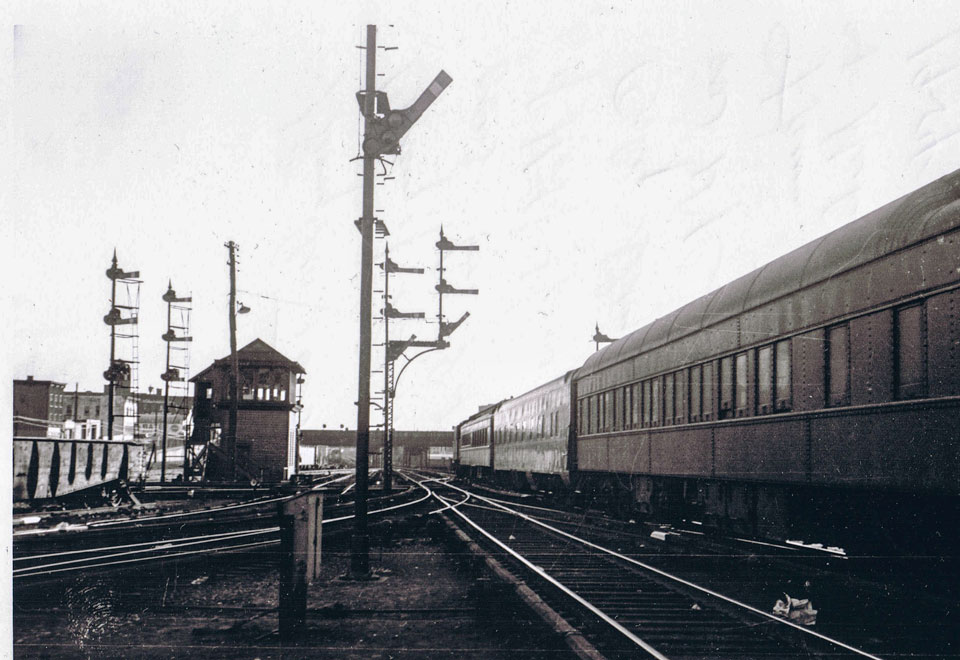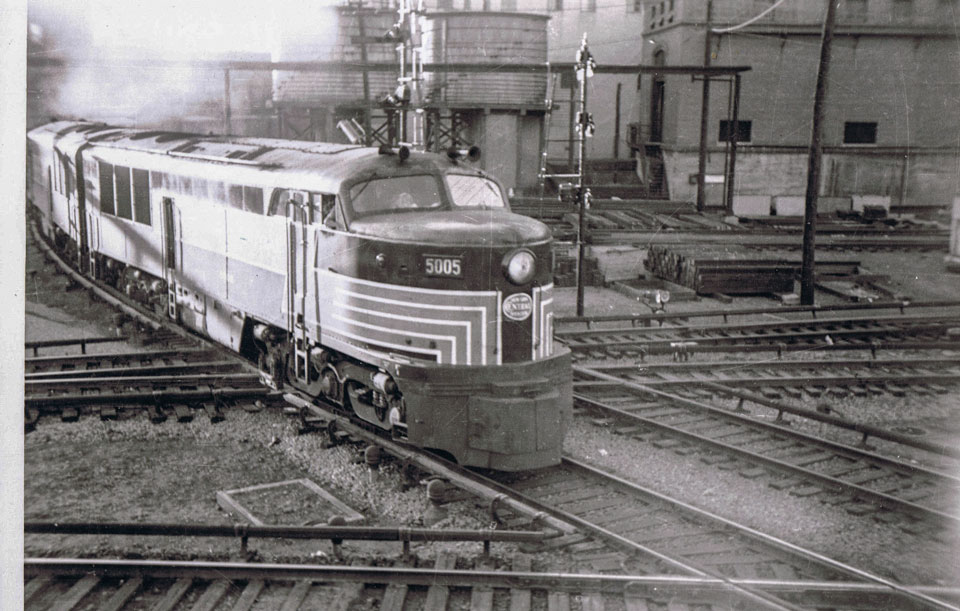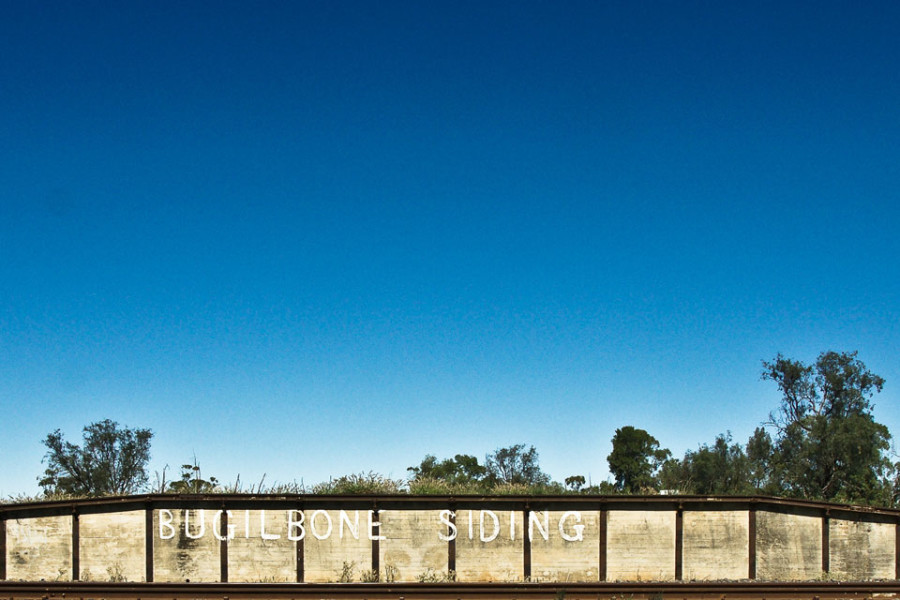
The city of Toledo, Ohio, has a fascinating railroading history, of which I know almost nothing. Trains run through between the East Coast and Chicago, and between Columbus and Detroit, and any possible combination. In the early days of railroading, in the late 19th century, cooperation between railroads basically did not exist. As a result, instead of trying to share tracks and other facilities, many different railroads built tracks to or through Toledo. Even today, Google Maps shows an amazing collection of tracks going every which way.
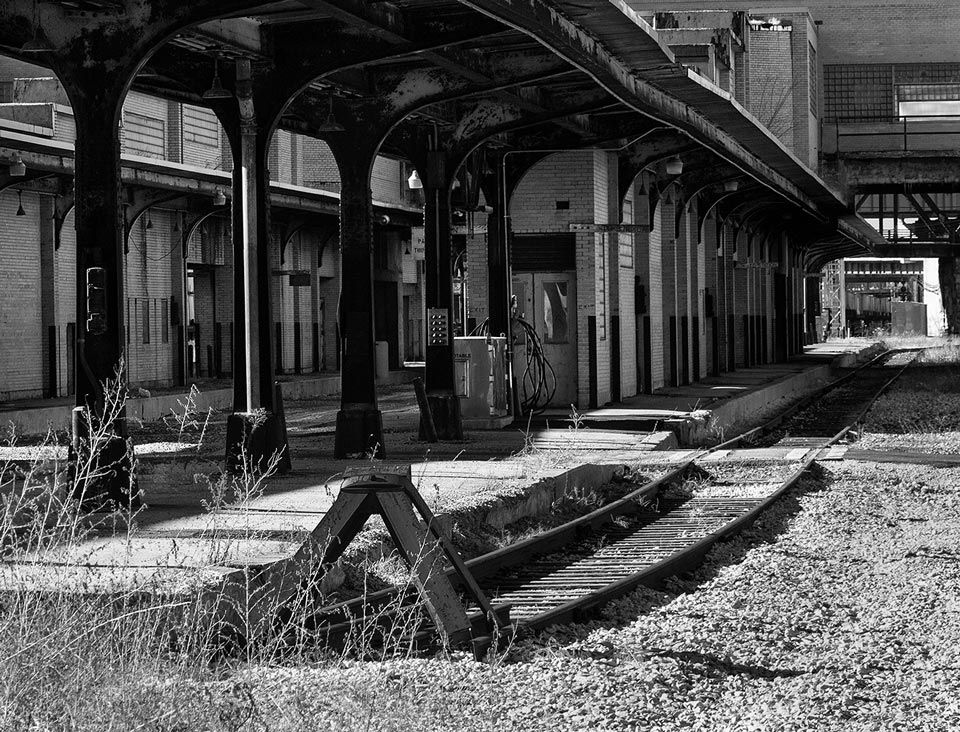
A central passenger railroad station was built in Toledo in 1886, but by 1930 it was so decrepit that when it caught fire, watching citizens cheered. They were sad later, when the structure was repaired instead of replaced. A couple of decades later, in 1950, they got their wish, and the new Toledo Union Station was opened.
That was still in the glory days of passenger rail transportation, and its many tracks and platforms would have been constantly busy. But, as time went on, we all know the fate of passenger rail. Today, the station houses a nice waiting room for Amtrak’s four trains per day. That’s all the passenger traffic it sees. Freight trains pass on the main Norfolk Southern line, frequently stopping for crew changes.
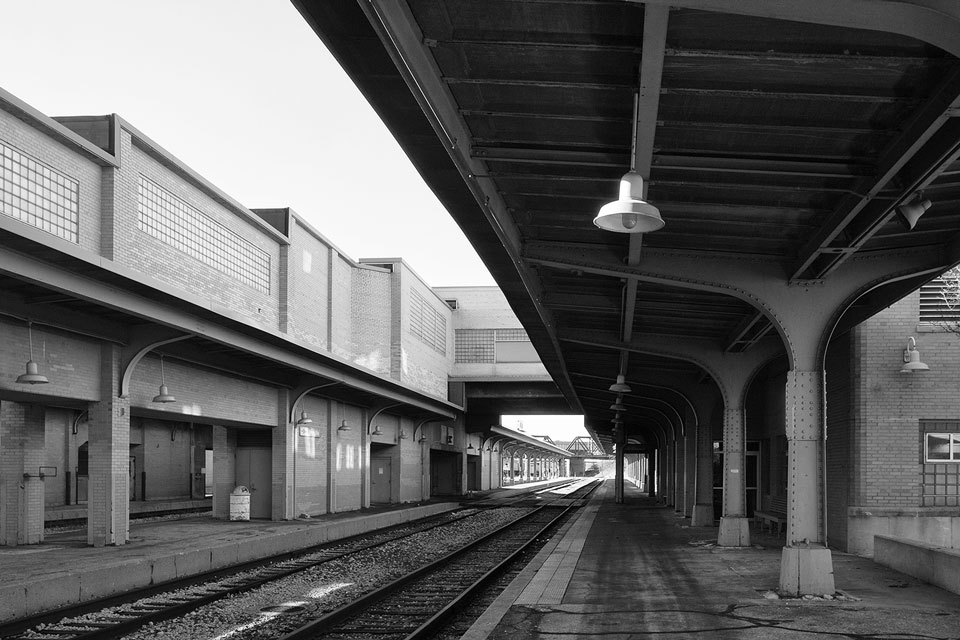
During the Christmas holiday of 2013, I had a day to spend exploring northwest Ohio and visiting Fostoria, a favorite location. One of my stops was Toledo Union Station. It is still an impressive building, but I think the station must feel sad to be used so far below its potential. I wandered its empty platforms, wondering what they would have looked like when they were crowded with passengers, and porters, and train crews, and trains everywhere. They’re not there any more.
Rob Richardson – Photographs and text Copyright 2016
See more of Rob’s work at: Where Trains Were
